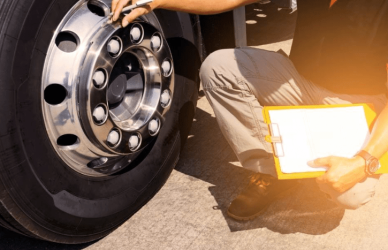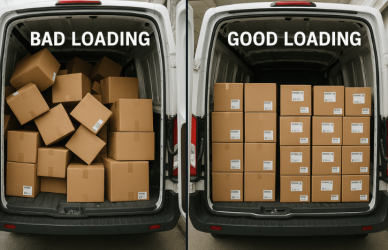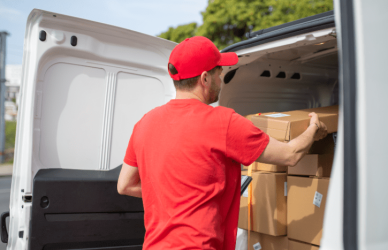While autonomous trucks are being heralded as a revolutionary step towards improved highway safety, the Owner-Operator Independent Drivers Association warns that this is far from reality. Although technological advancements have made travel more secure than ever before, there’s still much to be done in terms of preventing accidents and safeguarding drivers on our roads.
“Despite the various claims that autonomous vehicles will lead to zero deaths, there continue to be real-world situations in which automation has devastatingly failed,” OOIDA wrote in comments to the Federal Motor Carrier Safety Administration. “While autonomous vehicles might improve safety under certain conditions, they create new risks with dangerous outcomes.”
On Monday, March 20, the Owner-Operator Independent Drivers Association (OOIDA) provided feedback to a supplemental advance notice of proposed rulemaking from the Federal Motor Carrier Safety Administration. The notice addressed how best to safely integrate commercial motor vehicles equipped with automated driving systems into our roads and highways.
“Beyond ensuring that the (regulations) provide appropriate standards for the safe operation of autonomous vehicles, FMCSA must consider unforeseen concerns and practices that might offset the potential safety, mobility and sustainability benefits from the technology.”
OOIDA recently issued a reminder to the FMCSA about how autonomous vehicles could drastically disrupt the trucking industry and its workforce. The agency is currently working on initiatives aimed at both recruiting and retaining drivers while also preparing for potentially widespread introduction of self-driving trucks in coming years.
“While we are still years away from fully automated trucks, decisions made today will have a significant impact on the deployment of autonomous vehicle technologies, ADS-equipped commercial motor vehicles, and ultimately, on the livelihood of professional truck drivers and the economy at large,” OOIDA wrote. “Elected officials, federal regulators and our industry partners must develop autonomous vehicle policies in a responsible manner that considers the perspective of American truckers.”
FMCSA’s supplemental notice asked the public to provide feedback in three areas.
- Notification by motor carriers operating Level 4 or 5 automated driving system-equipped commercial motor vehicles
- Oversight for remote assistants
- Vehicle inspection and maintenance
It’s reported that FMCSA is considering creating a requirement for motor carriers to notify that they will operate autonomous vehicles without a human driver behind the wheel in interstate commerce. The agency seeks comment on regulatory approaches that would “enable it to obtain relevant safety information and the current and anticipated size of the population of motor carriers operating ADS-equipped commercial motor vehicles.”
“OOIDA strongly believes that any process to advance automated technology should be met with mandatory data transparency from manufacturers,” the Association wrote. “This will help educate consumers, the industry, and regulators about the actual reliability of autonomous technology. We supported NHTSA’s 2021 general standing order that now requires AV trucking companies to report crashes on public roadways. However, this safety data should be made available throughout the deployment process, not just after a crash occurs. The use of unproven automated technologies on our highways poses a significant threat to small-business truckers, and we urge you to act to protect all road users with greater transparency and oversight of their development.”
In addition, FMCSA is seeking information on what requirements, if any, should be placed on persons performing remote assistant dues for motor carrier operating Level 4 or 5 automated driving system-equipped commercial motor vehicles.
“Due to various safety and operational concerns, OOIDA opposes the concept of remotely operated commercial motor vehicles,” the Association wrote. “The vast majority of driving jobs are unlikely to ever be fully automated, and the industry is decades from automating jobs in a safe manner. The specific requirements and qualifications will depend greatly on what tasks are required by any potential remote operator. These positions would need comprehensive training and knowledge of automated driving systems. This calls for a CDL endorsement for individuals operating an ADS-equipped CMV. Additionally, FMCSA must consider varying types of endorsements depending on the standards and software for different autonomous vehicles.”
The agency has also requested public comment regarding the inspection and maintenance of automated driving systems for commercial vehicles.
“Level 4 or 5 ADS-equipped CMVs should be at least subject to pre-trip and post-trip inspections similar to the processes currently outlined in the regulations,” OOIDA wrote. “Certainly, aspects of these inspections will need to be supplemented given all the technological equipment that must not malfunction at any time. Inspections should be more frequent as upgrades and changes seem to be the norm for electronic equipment. At this point, we believe it’s premature to consider ways for these unproven vehicles to avoid any inspection requirements.”
In a statement, the Owner-Operator Independent Drivers Association emphasized that self-driving vehicles must be equipped to interact appropriately with police officers, firefighters and other emergency personnel. The organization highlighted the importance of safety for both drivers and public servants alike.
“This should be a basic function of the vehicle, no matter the cost,” OOIDA wrote.
“The potential of autonomous vehicles on the nation’s highways invites more questions than answers,” OOIDA wrote. “Given the fact that there have already been a number of crashes involving ADS failures on our nation’s roads, FMCSA must develop standards that are based on documented research and testing data. The continued reliance on voluntary safety reporting from ADS manufacturers will not effectively build public trust, acceptance and confidence in the testing and deployment of these systems and will make it difficult for the agency to properly modify safety regulations.”
Source: Land Line








